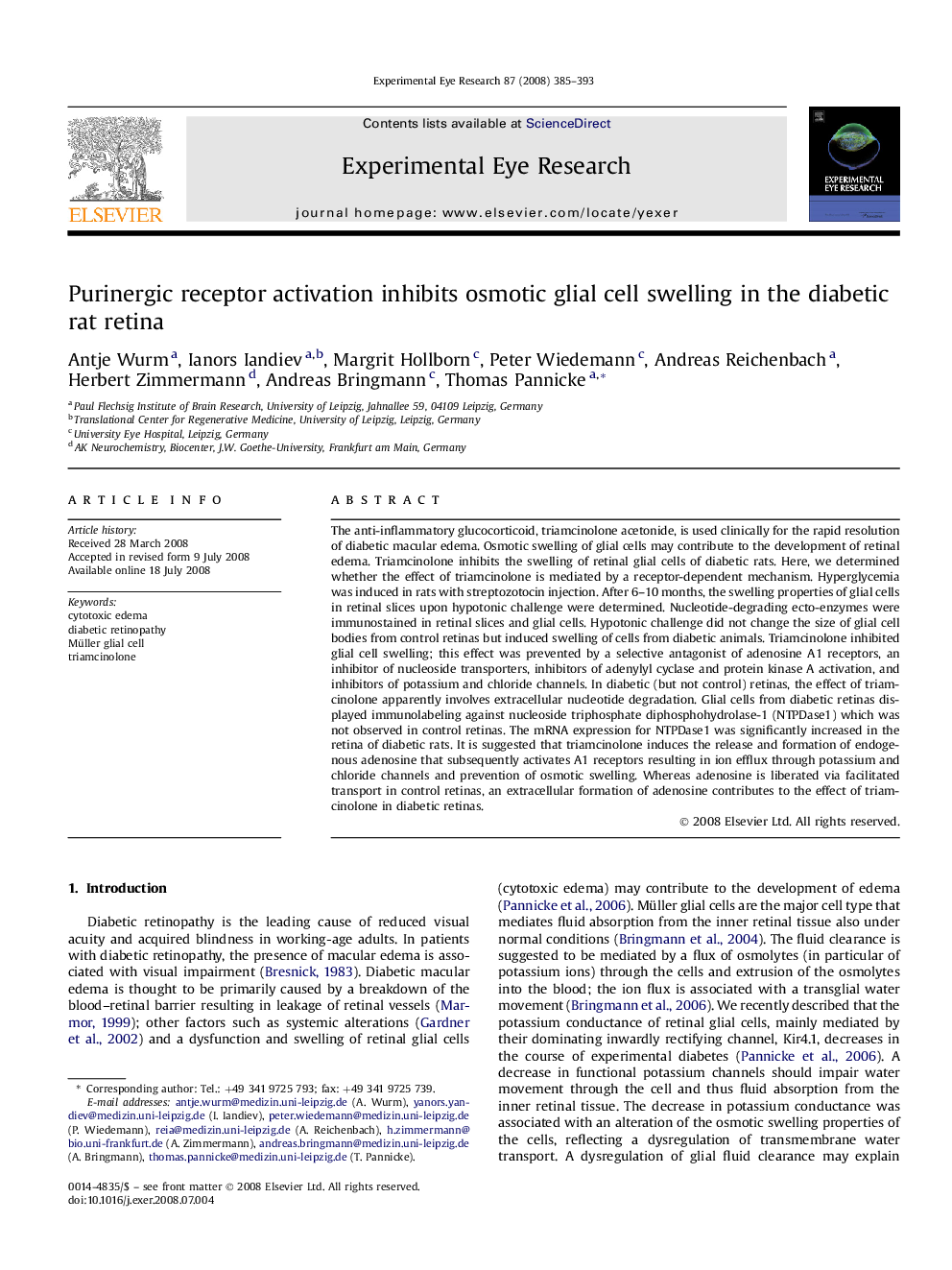| Article ID | Journal | Published Year | Pages | File Type |
|---|---|---|---|---|
| 4011988 | Experimental Eye Research | 2008 | 9 Pages |
The anti-inflammatory glucocorticoid, triamcinolone acetonide, is used clinically for the rapid resolution of diabetic macular edema. Osmotic swelling of glial cells may contribute to the development of retinal edema. Triamcinolone inhibits the swelling of retinal glial cells of diabetic rats. Here, we determined whether the effect of triamcinolone is mediated by a receptor-dependent mechanism. Hyperglycemia was induced in rats with streptozotocin injection. After 6–10 months, the swelling properties of glial cells in retinal slices upon hypotonic challenge were determined. Nucleotide-degrading ecto-enzymes were immunostained in retinal slices and glial cells. Hypotonic challenge did not change the size of glial cell bodies from control retinas but induced swelling of cells from diabetic animals. Triamcinolone inhibited glial cell swelling; this effect was prevented by a selective antagonist of adenosine A1 receptors, an inhibitor of nucleoside transporters, inhibitors of adenylyl cyclase and protein kinase A activation, and inhibitors of potassium and chloride channels. In diabetic (but not control) retinas, the effect of triamcinolone apparently involves extracellular nucleotide degradation. Glial cells from diabetic retinas displayed immunolabeling against nucleoside triphosphate diphosphohydrolase-1 (NTPDase1) which was not observed in control retinas. The mRNA expression for NTPDase1 was significantly increased in the retina of diabetic rats. It is suggested that triamcinolone induces the release and formation of endogenous adenosine that subsequently activates A1 receptors resulting in ion efflux through potassium and chloride channels and prevention of osmotic swelling. Whereas adenosine is liberated via facilitated transport in control retinas, an extracellular formation of adenosine contributes to the effect of triamcinolone in diabetic retinas.
